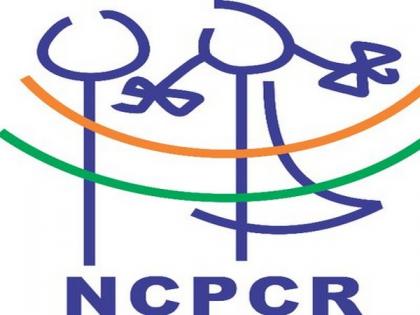In minority schools, 62.50 pc of student population belongs to non-minority community, only 37.50 pc to minority communities: NCPCR report
By ANI | Updated: August 12, 2021 00:00 IST2021-08-11T23:49:42+5:302021-08-12T00:00:03+5:30
The apex child rights body National Commission for Protection of Child Rights (NCPCR) in a report said that in minority schools, 62.50 per cent of the student population belongs to non-minority communities and only 37.50 per cent belongs to minority communities.

In minority schools, 62.50 pc of student population belongs to non-minority community, only 37.50 pc to minority communities: NCPCR report
The apex child rights body National Commission for Protection of Child Rights (NCPCR) in a report said that in minority schools, 62.50 per cent of the student population belongs to non-minority communities and only 37.50 per cent belongs to minority communities.
The report sharply points out, "Muslim community schools (20.29 per cent) have the lowest percentage of nonminority population among their minority schools. The Christian community schools have 74.01 per cent of the student population belonging to the non-Christian community."
The report in a form of study was prepared with an aim to find a way and ensure that children from minority communities receive their fundamental rights to quality education.
The spike in schools with minority status certificates (MSC) has taken place after the passage of the 93 Amendment Act in 2006.
The 93rd amendment act in 2006 through which reservation was made compulsory in private institutions but exempt minority education institutions from it.
The report says that "More than 85 per cent schools of the total schools securing the certificate (MSc) in the year 2005-09 and later."
Schools were found to be admitting non-minority students to a large extent. In Madhya Pradesh, Chandigarh, and Uttarakhand, the percentage of students from the non-minority communities goes up to more than 80 per cent.
Significantly the report also states that "there are a large number of children attending Schools/ Institutions that are not recognised."
Children also attend such institutions that are unrecognized as these are unmapped and a number of such institutions are not known.
While talking to ANI, NCPCR chairperson Priyank Kanoongo stated, "Students who are entitled to receiving the benefit are not receiving the benefits, especially students studying in religious institutions. The poor and deprived are not getting an education. NCPCR in its report has tried to understand the reason behind this."
"We tried to assess how much the benefit of this exemption is being seen in these children," Kanoongo added.
While preparing this report all the states were asked about their minority schools and the students of minority communities. The datasheet given by the states was further being checked by the Quality Council of India (QCI).
The assessment by QCI says many students who belong to the category in the majority of the population are reading in minority schools.
"In some states, almost 80 per cent of students reading in minority schools are Hindu, which obviously means minority students are not getting the facility," Kanoongo said.
The report in its recommendation stated that according to the NCMEI guidelines, 'the State Government can prescribe the percentage of the minority community to be admitted in a minority educational institution taking into account the population and educational needs of the area in which the institution is located.
However, in the absence of clear guidelines from States and despite the large presence of minority students in school-going age groups, minority schools are catering to less than 8% of the minority children population.
It also recommends that "it is important that NCERT along with SCERTS should play a proactive role in extending the right to education to all children. So far, the minority cell has not taken any constructive step for the education of children of minority communities."
It's time that the Council should hold consultative meetings with all stakeholders and create pathways for reaching out to these children and reach closer to the minorities.
The report has been submitted to the Ministry of Minority Affairs and the Union Education Ministry.
( With inputs from ANI )
Disclaimer: This post has been auto-published from an agency feed without any modifications to the text and has not been reviewed by an editor
Open in app